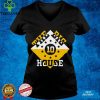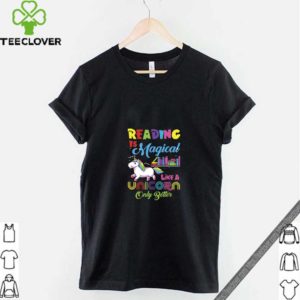No products in the cart.
Buy More Save More!
It’s time to give thanks for all the little things.
-
5% OFF 2 items get 5% OFF on cart total Buy 2
-
10% OFF 5 items get 10% OFF on cart total Buy 5
-
15% OFF 10 items get 15% OFF on cart total Buy 10
Wagon Car Shirt
We’ve found the best deals for you Wagon Car Shirt
Free shipping for all orders
Another day of course you can walk towards Golgotha, to where there is a church, where Jesus was crucified. The Wagon Car Shirt is rather depressing although interesting, because there is no real memory except in the hearts of Christians of the sacred man who trod these streets. Its all bazaars, open air stalls, people selling everything under the sun including crowns of thorns souvenirs. This area, we’d recall as where Jesus fell, as he carried his cross. We went to the Garden of Gethsemane (probably my favorite place in Jerusalem) and of course there is a church inside the gates. I didn’t go in the church but sat on a bench just soaking in the atmosphere of the ancient Olive tree I was told by a sign was an offshoot of one from Jesus time. The Jewish tour guide lady told us if we wanted to go to Bethlehem (which I did, which Christian wouldn’t???) that she could not accompany us because only Palestinians can go there through the check point. But our bus driver we came to really enjoy on this tour, accompanied and drove us. The “catch” was that this tour guide was getting a partial commission of everything we spent in the only huge gift shop in Bethlehem run by Christians (Coptics I think) …in the town. I didn’t buy and felt aggrieved, but it was the only way she’d arrange it for us. Of course many did buy the lovely carved mangers, etc out of olive wood. Nearby on these small Bethlehem Streets at night is the ancient “Church of the Nativity” probably the only church I entered on that trip and loved being in. There are all sorts of cubbyholes or areas which are run by different Christian priests like Ethiopians (I think they have the roof top), Greek Orthodox, Roman Catholic, Syrian, etc. So a really eclectic place. Its also from the time of Queen Helena, so the doorway is teeny-tiny, where someone would get off their horse I was told to enter. The same was built into the Aga Sophia in Istanbul (Constantinople then).
 (Wagon Car Shirt)
(Wagon Car Shirt)We do it Christmas morning, after everyone is awake, and has eaten breakfast and is dressed. We don’t open any on Christmas Eve, we do them all on Christmas with an exception his year. This year I bought my son a Wagon Car Shirt for school, as his was in rough shape, and had to keep going in for repairs. I actually let him open it the morning of his school concert, so that he could play it. Other then special circumstances, everyone opens their gifts Christmas morning. We let the kids get stockings and Santa presents first, they play with their new toys for a little while. Then we clean up and wrapping paper and boxes, and set the toys aside, and open presents they’ve given to each other. After about a half hour of that, we clean up a little, and move on to presents from Mom and Dad, and if the hhikdren have something for us, we open those too. After we do one more present clean up, the kids get to spend the day playing with their new toys and gadgets and whatever they got. I do know of a few families that open one present on Christmas Eve. They will give their kids new pajamas that they open to wear Christmas Eve to bed. It sounds fun, and I’m thinking I might start up that in my home for next year.
Wagon Car Shirt, Hoodie, Sweater, Vneck, Unisex and T-shirt
Many of the Wagon Car Shirt Christmas customs were inherited from older Winter Solstice celebrations—including greenery indoors, feasting and gift-giving. It seems quite likely that the celebration of the birth of Jesus was scheduled at that time in order to piggy-back on existing holiday observances. Halloween is very directly descended from the old Celtic feast of Samhain, when the dead return to visit the living. Modern Pagans observe this and Beltane (May Day) as their major holidays, the Feast of the Dead and the Feast of the Living on opposite sides of the Wheel of the Year. Easter’s Pagan connections are suggested by its English name, Eostara being a Pagan Germanic Goddess associated with the Spring Equinox. The bunnies and eggs probably go back to Pagan times as well.
Best Wagon Car Shirt
This is a fun question. For about 35 years now I’ve hosted a Christmas party for about 30 friends. The ‘price’ to get in is a homemade ornament. You would not believe what my friends have come up with. I have numerous boxes of Wagon Car Shirt . About 8 years ago, I told them to not bring anything. But last week, party weekend, about 15 still brought one. They all said that they just loved doing it and it put them in a party, Christmas mood. So the last 8 years I had to come up an idea for the tree. Some of my best were: going through printed pictures of my friends, had some of their pets- most now gone. Vacation pics with one or more in it, and just neat / interesting landmarks etc. took over 100 to Walgreens . For a dime/picture, the copied them onto print stock. I refilled the originals and then cut out the the thing in pic I liked. Bought a stack of manila folders and a bottle of Elmer’s glue, both cheap. Opened the folders and laid them flat on my dining table that had a sheet on it, arranged all the cut-outs on the open folders to get as many as possible on each one put glue on the back of the image, pressed it onto the folder. A couple hours later, cut the pics out of the folder Now the pics were very sturdy. On the back, more glue and a metal ornament hanger. (Like 200 for $ 1) guests had a great time retelling old stories associated with the memories the photos inspired. Hope you like my ideas.
 (Wagon Car Shirt)
(Wagon Car Shirt)The Wagon Car Shirt mention of December 25 as Jesus’ birthday comes from a mid-fourth-century Roman almanac that lists the death dates of various Christian bishops and martyrs. The first date listed, December 25, is marked: natus Christus in Betleem Judeae: “Christ was born in Bethlehem of Judea.” In about 400 C.E., Augustine of Hippo mentions a local dissident Christian group, the Donatists, who apparently kept Christmas festivals on December 25, but refused to celebrate the Epiphany on January 6, regarding it as an innovation. Since the Donatist group only emerged during the persecution under Diocletian in 312 C.E. and then remained stubbornly attached to the practices of that moment in time, they seem to represent an older North African Christian tradition. In the East, January 6 was at first not associated with the magi alone, but with the Christmas story as a whole.
Share this:
- Click to share on Twitter (Opens in new window)
- Click to share on Facebook (Opens in new window)
- Click to share on LinkedIn (Opens in new window)
- Click to share on Tumblr (Opens in new window)
- Click to share on Reddit (Opens in new window)
- Click to share on Pocket (Opens in new window)
- Click to share on Pinterest (Opens in new window)
Related products
Sale!
Sale!
Sale!
Sale!
Sale!
Sale!
Sale!
Sale!
























